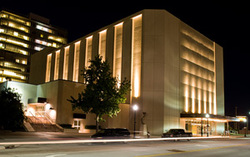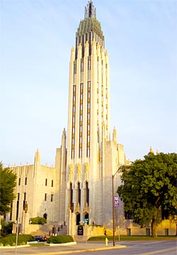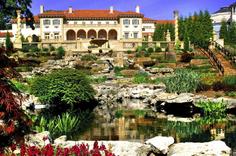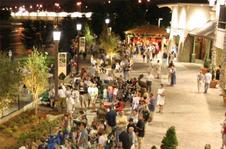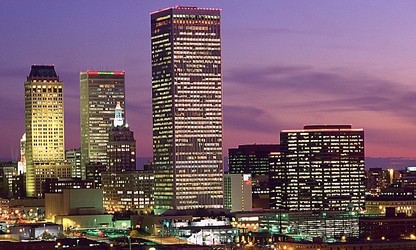
Today, Tulsa basks in the national and international, entertainment spotlight. With the popularity of the new BOK Center, an architectural gem displaying swirling lines, glimmering glass panes and canopy cantilevers that seem to float over the stunning futuristic structure, entertainment events have risen to new heights in the city. Designed by Argentine architect Cesar Pelli, the BOK Center, with 18,500 seats, and an impressive collection of art, valued at $2 million, is already fulfilling its mission as an icon for Tulsa. World-class performers including Paul McCartney, The Eagles, Celine Dion, Billy Joel, Elton John, Carrie Underwood, Neil Diamond, and Britney Spears are ensuring Tulsa’s importance in the entertainment world.
Tulsa’s culture is enhanced by outstanding performances at the Tulsa Performing Arts Center, designed by World Trade Center architect Minoru Yamasaki. Occupying half of a city block in historic downtown, the PAC holds four theaters that provide entertainment to more than 300,000 patrons annually. The PAC is home to 13 resident performing arts organizations, a touring Broadway series and renowned international and national performers. Resident groups such as the Tulsa Symphony, Tulsa Opera, Tulsa Oratorio, and Tulsa Ballet present a full season of performances each year.
While these state-of-the-art facilities and their events attract thousands, visitors also enjoy attractions such as the Tulsa Zoo and Oklahoma Aquarium; unique shopping districts; festivals such as Mayfest, Dfest, and Oktoberfest; Pow-Wows; Art Deco architecture; fine dining; Broadway performances; year-around events; extensive hiking trails and parks, including River Parks; gardens; eclectic nightlife at several entertainment districts; and near-by lakes and recreational areas.
Visitors can discover Tulsa’s historical importance in the oil industry with visits to two of the city jewels, the Gilcrease and Philbrook Museums, inspired by oil barons. The Gilcrease is home to the world’s largest, most comprehensive collection of art of the American West, thanks to the vision of Thomas Gilcrease. Oilman Waite Phillips donated his opulent mansion and grounds to the city as an art museum, creating the Philbrook Museum of Art. As you explore the Renaissance-styled mansion, you’ll be amazed at the unique blend of European and American Indian art and delight in the beautiful outdoor gardens.
Tulsa’s culture is enhanced by outstanding performances at the Tulsa Performing Arts Center, designed by World Trade Center architect Minoru Yamasaki. Occupying half of a city block in historic downtown, the PAC holds four theaters that provide entertainment to more than 300,000 patrons annually. The PAC is home to 13 resident performing arts organizations, a touring Broadway series and renowned international and national performers. Resident groups such as the Tulsa Symphony, Tulsa Opera, Tulsa Oratorio, and Tulsa Ballet present a full season of performances each year.
While these state-of-the-art facilities and their events attract thousands, visitors also enjoy attractions such as the Tulsa Zoo and Oklahoma Aquarium; unique shopping districts; festivals such as Mayfest, Dfest, and Oktoberfest; Pow-Wows; Art Deco architecture; fine dining; Broadway performances; year-around events; extensive hiking trails and parks, including River Parks; gardens; eclectic nightlife at several entertainment districts; and near-by lakes and recreational areas.
Visitors can discover Tulsa’s historical importance in the oil industry with visits to two of the city jewels, the Gilcrease and Philbrook Museums, inspired by oil barons. The Gilcrease is home to the world’s largest, most comprehensive collection of art of the American West, thanks to the vision of Thomas Gilcrease. Oilman Waite Phillips donated his opulent mansion and grounds to the city as an art museum, creating the Philbrook Museum of Art. As you explore the Renaissance-styled mansion, you’ll be amazed at the unique blend of European and American Indian art and delight in the beautiful outdoor gardens.
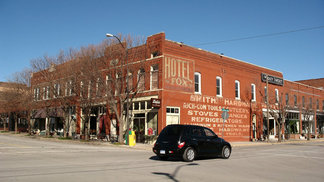
Downtown Entertainment Districts
the Brady District (East Brady Street, downtown): This hub of the area’s art scene boasts
art galleries, shops, restaurants and nightclubs. Cain’s Ballroom, an historic venue
called the birthplace of Western Swing and the Carnegie Hall of Western Music,
is listed on the National Register of Historic Places. The grand ballroom continues
to attract concert-goers as diverse as the music that draws them here. From glass-
blown works of art to chocolate creations, Brady Street invites shoppers to discover
a unique shopping experience. A few treasures you’ll find here are the Tulsa
Glassblowing Studio, and CFC Chocolatier.
the Blue Dome District: (downtown, between 1st and 3rd, Elgin and Hartford): Once a
1920’s gas station attracting Route 66 travelers with its Art Deco blue dome, this
gem is now the place to enjoy pubs, restaurants and regional bands. Several
festivals take place here including Dfest, the most comprehensive music event of
its kind. The Oklahoma Jazz Hall of Fame is located in Tulsa’s historic downtown
Union Depot and aims to create unity through music. Concerts, classes and cultural
events allow the Hall of Fame to showcase the American art forms of jazz and
blues in this historic location.
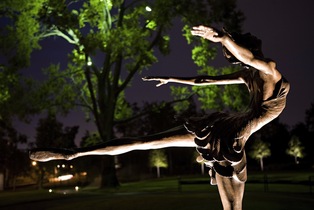
Public Art Displays
BOK Center Art Collection (200 S. Denver): There is a 2-million dollar art collection
adorning this newest icon of Tulsa. Five renowned artists, Joe Andoe, Mark Lewis,
father-son team Bill and Demos Glass, and Kendall Buster have their artwork on
display.
Clayton Coss, chainsaw sculptures (Utica Square Shopping Center, 21st & Utica, and
throughout Tulsa): appearing in hundreds of tree trunks around Tulsa, from school
yards to city parks to the yards of residents. There are several examples in the
Utica Square Shopping Center.
Tulsa Convention Center (6th & Houston): “Continuum” makes the most ephemeral of
seemingly ordinary things with light through a self-generated rainbow of
iridescent tubes, hanging from the ceiling of the Convention Center. “Radiant
Range” is a 100-foot-long stretch of reflective squares on the center’s upper level.
The NatureWorks Sculptures (along Riverside Drive): Impressive displays of nature adorn
Riverside Drive thanks to Tulsa’s NatureWorks, a non-profit organization dedicated
to assisting wildlife conservation efforts. Each year, they honor local supporters of
all things wild and natural with a bronze sculpture donated to the City of Tulsa
and installed in River Parks.
Rosalind Cook’s “Celebrating the Arts” at Harwelden (2210 S. Main): One of Tulsa’s great
artists, Rosalind Cook, has created the perfect sculpture to adorn the home of the
Arts & Humanities Council of Tulsa—a dancing jester complete with a cap, bells
and theatrical masks. The animated jester is holding a flute, embracing all things
musical.
Tulsa Historical Society Vintage Garden—The Five Moons (25th & Peoria): A new addition
to the magnificent art adorning the city, “The Five Moons,” was installed on the
grounds of the Tulsa Historical Society’s new home. A group of five larger-than-
life-size bronze statues honor Indians, especially Oklahoma’s five internationally
acclaimed Indian ballerinas: Yvonne Chouteau, Rosella Hightower, Moscelyne
Larkin, Maria Tallchief, and Marjorie Tallchief.
The Tulsa Performing Arts Center Art Collection (110 E. Second): More than 70
individual’s works--paintings, tapestry, prints, sculpture—are home in this
permanent collection. Some of the artists represented are Louise Nevelson, Barbara
Hepworth, P.S. Gordon, Otto Duecker and Daniel Lang. Gracing the Williams Green
near the PAC (3rd & Boston) is Jay O’Melia’s “Oklahoma Indian Ballerina.” This
graceful work, alive with form and movement, honors Oklahoma’s five Indian
ballerinas, all of whom had a lasting and profound impact on the dance world in
Oklahoma, the United States and the world. The PAC also showcases the work of
notable Indian artists like Woody Crumbo, Joan Hill, and Doc Tate Nevaquaya.
